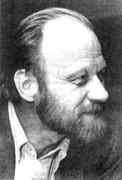Person: Moser (3), Jürgen

Jürgen Moser was a German-born American mathematician who worked in Hamiltonian dynamical systems and partial differential equations.
Mathematical Profile (Excerpt):
- Kurt Moser was a neurologist and came under pressure to fit in with the Nazi views on eugenics.
- When Jürgen was ten years old his parents were encouraged to send him to such a school but Kurt, fully aware of the situation, was able to ensure that Jürgen did not fall under the Nazi influence by avoiding having Jürgen sent there.
- Jürgen attended the Gymnasium in Königsberg but when he was fifteen years old all the boys were forced into a military auxiliary force and trained to man anti-aircraft guns.
- Jürgen was not very strong physically so he was put to work computing trajectories.
- Moser, along with the other sixteen year old boys from his class, were sent to defend the city from the Russians.
- Moser escaped from some of the horrors by occupying himself in mathematics whenever he had a free moment.
- Before the siege ended in April 1945 Moser and his parents were evacuated by boat towards the British held zone.
- Moser and his parents survived but were separated in the terrible chaos.
- Six months after the evacuation Moser made contact with his parents who, by this time, were back in the zone held by the Russians.
- Moser tried to cross the border into the Russian sector to reunite with his parents.
- He had not been held for long when there was an opportunity to escape which Moser took.
- The authorities did not allow this however so Moser again took the risk of crossing the border again, this time in the opposite direction.
- Franz Rellich at Göttingen knew immediately that he began to talk to Moser that here was someone with an exceptional mathematical talent.
- The difficulty that Moser had no money was overcome and he began to study the spectral theory of differential equations with Rellich as his advisor.
- He returned to Göttingen, however, in 1951 and became a major influence on Moser.
- In particular Moser acquired an interest in astronomy and number theory through Siegel.
- In 1952 Moser was awarded his doctorate from Göttingen for his thesis Störungstheorie des kontinuierlichen Spektrums für gewöhnliche Differentialgleichungen zweiter Ordnung Ⓣ(Perturbation theory of the continuous spectrum for ordinary differential equations of second order).
- Moser then published papers such as Periodische Lösungen des restringierten Dreikörperproblems, die sich erst nach vielen Umläufen schliessen Ⓣ(Periodic solutions of the restricted three-body problem, the close only after many rounds) (1953) and Über periodische Lösungen kanonischer Differentialgleichungssysteme Ⓣ(On periodic solutions of canonical systems of differential equations) (1953).
- In 1955 several of Moser's papers were published including Singular perturbation of eigenvalue problems for linear differential equations of even order, and Nonexistence of integrals for canonical systems of differential equations.
- After this Moser emigrated to the United States.
- Moser was appointed to New York University as an assistant professor in 1955.
- How much this prompted Moser to step down as director is not clear for he had never greatly liked the role.
- In 1980 Moser left the United States and took up a position at the Eidgenössische Technische Hochschule in Zürich.
- The appointment came about in a rather strange way, for initially Moser had written a letter of support for an applicant for a vacant position there.
- The president then decided that he would try to appoint Moser to ETH.
- Moser worked in ordinary differential equations, partial differential equations, spectral theory, celestial mechanics, and stability theory.
- The leading theme of virtually all of Moser's work in dynamics is the search for elements of stable behaviour in dynamical systems with respect to either initial conditions or perturbations of the system.
- This work introduced techniques which could be applied to almost any dynamical system of Hamiltonian type and the "Moser twist stability theorem".
- Moser wrote several important books.
- Integrable Hamiltonian systems and spectral theory (1983) arises from a course of lectures which Moser gave at the Scuola Normale Superiore in Pisa in 1981.
- A course of lectures that Moser gave at ETH in the spring of 1988 became the basis for Selected chapters in the calculus of variations (2003).
- In 1979-80 Jürgen Moser and Eduard Zehnder began to write a book on Hamiltonian dynamical systems.
- Moser received a host of honours for his remarkable contributions.
- Moser was invited to give the Gibbs lecture of the American Mathematical Society in Dallas in 1973, the Pauli lectures at ETH in 1975, the American Mathematical Society Colloquium lectures in Toronto in 1976, the Hardy lectures in Cambridge in 1977, the Fermi lectures in Pisa in 1981, and the John von Neumann Lecture of the Society for Industrial and Applied Mathematics in Seattle in 1984.
- In 1998 Moser was invited to address the International Congress of Mathematicians in Berlin, the third time he had been invited to address an International Congress.
- Sadly Moser had only just over a year to live after delivering his lecture in Berlin.
Born 4 July 1928, Königsberg, Germany (now Kaliningrad, Russia). Died 17 December 1999, Zürich, Switzerland.
View full biography at MacTutor
Tags relevant for this person:
Astronomy, Origin Russia, Prize Wolf
Thank you to the contributors under CC BY-SA 4.0! 

- Github:
-

- non-Github:
- @J-J-O'Connor
- @E-F-Robertson
References
Adapted from other CC BY-SA 4.0 Sources:
- O’Connor, John J; Robertson, Edmund F: MacTutor History of Mathematics Archive
